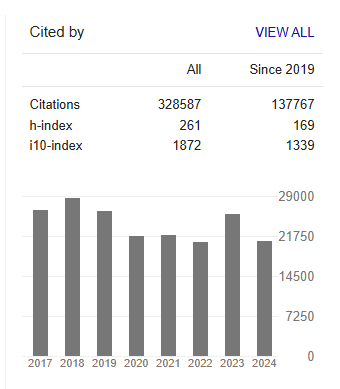Short Article - (2025) Volume 8, Issue 1
About the Information Contained in Constants
Received Date: Feb 18, 2025 / Accepted Date: Mar 18, 2025 / Published Date: Mar 27, 2025
Copyright: �©2025 Friedhelm M. Joge. This is an open-access article distributed under the terms of the Creative Commons Attribution License, which permits unrestricted use, distribution, and reproduction in any medium, provided the original author and source are credited.
Citation: Joge, F. M. (2025). About the Information Contained in Constants. Adv Theo Comp Phy, 8(1), 01-02.
Abstract
Constants are among the properties of matter. A formula (a) is developed. It represents information flow that has constants as properties.
Keywords
Information, Time, Constants
Introduction
Definition of Symbols Used in Formulas
EM = visible baryonic matter Ed = dark energy
H = SHANNON's information entropy
H/t = Information flow = Dynamic Information
H0 = HUBBLE's constant t = time
tu = age of the universe tp = PLANCK time
SH = BEKENSTEIN-HAWKING entropy
Th = HAWKING temperature
AH = area of the black hole event horizon measures the information potentially contained in it G = constant of gravitation
h = PLANCK's quantum of action, â? = h / (2π)
c = speed of light
Derivation of a Formula (a)
In my article “Calculation of Dark Energy and Dark Matter” [1] the formula (2.1) is derived:
E = c5 / (81/2 · G · H ) = 5.61 · 1069 J (2.1)
Formula (2.1) is deducted from the BEKENSTEIN-HAWKING entropy SH = kc3 A / (4â?ÂÂG) and HAWKING temperature TH= â?ÂÂc3 / (8πkGM).
By combining formula (2.1) and (1):
E = h · ln2 · H / t (1)
you get
H = c5 / (81/2 · ln2 · hG · H0) · t (a)
Conclusion
A new formula (a) has been developed. It contains the information flow that appears as properties [2].
Application
This formula (a) can also be used in conversion to accurately calculate the value of the HUBBLE's constant
References
- Jöge, F. M. (2019). Calculation of Dark Energy and Dark Matter. International Journal of Physics and Astronomy, 7(1), 1-7.
- Jöge, F. M. (2011). Information und Wirkung – Beitrag zur Einführung des Immanenzbegriffs als physikalische Größe. © Frieling- Verlag · Berlin, 1. Auflage 2011, ISBN 978-3-8280-2968-2 Seite 14.
- Jöge, F. M. (2025). About the Percentage Composition of the Energies of the Universe, Provided by the MAX PLANCK Institute for Radio Astronomy – Exact Calculation of the Value of the HUBBLE's Constant. Adv Theo Comp Phy, 8(1), 1-2.
- Bekenstein, J. D. (2003). Information in the holographic universe. Scientific American, 289(2), 58-65.
- Görnitz, T. H. (2002). Der kreative Kosmos: Geist und Materie aus Information. Spektrum, Akademie Verlag, pg.388.
- Pagel, L. (2013). Information ist Energie. Springer Fachmedien Wiesbaden, pg.27.
- Ising, H. (2020). Information and Energy. https://dx.doi.org/10.6084/m9.figshare.18865316.v2.
- Eigen, M. (1994). Von der Entropie zur Information—die physikalische Chemie der belebten Materie. Ber. Bunsenges. Phys. Chem, 94(11), 1351-1364.



